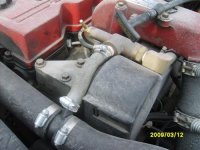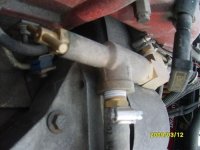DTanklage
Banned
- Joined
- Jan 2, 2009
- Messages
- 1,315
where did that come from? I didn't see him take anything out of context.
I really think the first one is the way to go, and has been said earlier I think it would be better to plumb it into the heater supply line instead of the return, that way you are not cutting flow through the heater core, this applies to non-trailer queens only obviously.
thanks, me either.
didnt the factory plumb some of the years different than others (heater core plumbing)? i know my '97 has two lines running along the motor but recall seeing some of the earlier trucks only have one. was thinking that may be why the instructions suggest what they do? prolly not, every core has to have a supply and a return...just trying to figure out why it would suggest that
*on all the trucks does the heater get its supply from the frt of the head and do they all return to the lower rad hose?
Last edited:


